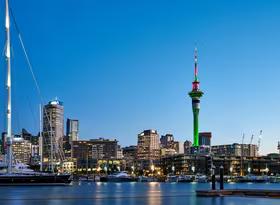
Why are freight prices suddenly surging?
This article outlines how the Israel-Gaza conflict is impacting freight prices, and the implications for New Zealand. Freight prices had been steadily declining since mid-2021 as pandemic-related supply-chain issues dissipated, but picked up sharply in January. Although prices are still around a quarter of their 2021 peak, the Drewry World Container Index jumped 27%pa in January, and is now 54% above its pre-pandemic (January 2019) level. Container freight rate indices measure the cost of transporting goods through shipping containers.
Red Sea Crisis sends prices soaring
Geopolitical tensions are forcing firms to pause shipments through the Red Sea trade route, which includes the vital Suez Canal. The Suez Canal connects trade between Asia and Europe.
The Houthi movement, a rebel group based in Yemen, began to attack commercial vessels in the Bab-el-Mandeb strait in November 2023, in response to Israel’s actions against Gaza. The conflict continued to escalate over the remainder of 2023 and into 2024.
Houthis are using ballistic missiles against commercial vessels, as American forces retaliate with targeted strikes into Yemen. Reuters reported in late December 2023 that shipping companies including Maersk, MSC, and Hapag-Lloyd have suspended all journeys through the Red Sea and Suez Canal. Oil conglomerate BP also suspended Red Sea shipments in December, and Shell joined the growing list this week.
The Suez Canal, which handles over 10% of global trade, is accessed from Asia via the Bab-el-Mandeb strait. Avoiding the Bab-el-Mandeb strait, and therefore the Suez Canal as well, requires going around Africa’s Cape of Good Hope; this adds around 6,000km and 10 days of travel to the journey, according to Dutch bank ING.
The severe chokepoint in Bab el-Mandeb has come on top of existing disruptions to maritime shipping. Drought in the Panama Canal, which connects the Atlantic and the Pacific oceans, was already limiting global shipping capacity. Before the Houthi attacks, the Suez Canal had been the detour for ships hoping to travel through the Panama Cana. The Northern Sea Route connecting Asia and Europe is another option, but is only usable over a short seasonal window due to ice. Railway infrastructure linking China and Europe has been affected by sanctions against Russia. This lack of viable alternatives means that the arduous and more costly detour around Africa is now the best (and essentially only) bet for international shipping.
Chart 1 shows the massive jump in freight prices at the beginning of 2024. The Drewery World Container Index rose 61% over the week to 4 January compared to the previous week, the second-largest weekly increase in the last decade
Prices are well below their September 2021 peak, but are expected to continue rising in the near-term as flow-on effects from the Red Sea Crisis filter through the industry.
Potential for inflation, but downside risks too
The Red Sea Crisis has fanned fears of aggravating global inflation, which is already a central concern across major economics. CNBC reported in early January this year that the spike in Asia-Europe shipping costs is already having a “contagion effect” across the world, with shipping costs between Asia and the United States also spiking.
Major economies more directly tied to the Red Sea Crisis, such as the United States and the Eurozone, are concerned that higher shipping costs will eventually be passed onto consumers, reigniting inflationary pressures and potentially keeping interest rates higher for longer.
Higher transport costs would take several months to flow through to consumer items, and weakening global demand may discourage firms from raising prices significantly. There is some risk of opportunistic price gouging – where firms take advantage of higher inflation expectations to raise their prices – but patchy demand conditions are a significant deterrent.
New Zealand will be relatively better off
Chart 2 shows that the increase to China – Australia/NZ shipping costs is much more moderate compared to the Red Sea route and the overall total. Between the week ending 29 Dec 2023 and the week ending 12 Jan 2024, freight costs from China through the Red Sea and Persian Gulf surged 37%. The overall index increased 25%, and Australia/NZ costs rose just 9.2%. All indices are sitting at around a third of their mid-2021 peak.
Shipping costs for New Zealand are likely to feel a more muted affect, as China makes up the largest share of our imports. The Red Sea Crisis still presents a serious challenge to the global economy. Oil prices are now ticking higher, which will flow through into domestic transport costs – between the week ending 29 Dec 2023 and the week ending 12 Jan 2024, the petrol import margin rose 6%.
The inflationary risk of higher shipping costs is mitigated by the fact that only around 40% of our Consumer Price Index is comprised of tradable (overseas-based) inflation. the inflationary risk of higher shipping costs is mitigated by the fact that only around 40% of our Consumer Price Index is comprised of tradable (overseas-based) inflation. Non-tradable (domestic based) inflation has been the more stubborn component so far, and the Reserve Bank has little influence over imported inflation.
At this stage, we expect the Reserve Bank will keep an eye on developments in the Red Sea trade route, but are unlikely to consider it as an important risk in the next Monitory Policy Review.
The scope for trade disruption is still uncertain, with tensions in the region extremely unstable. As the situation evolves, central banks and decision makers around the world will have to be vigilant and proactive to minimise the effect on the global economy.


















